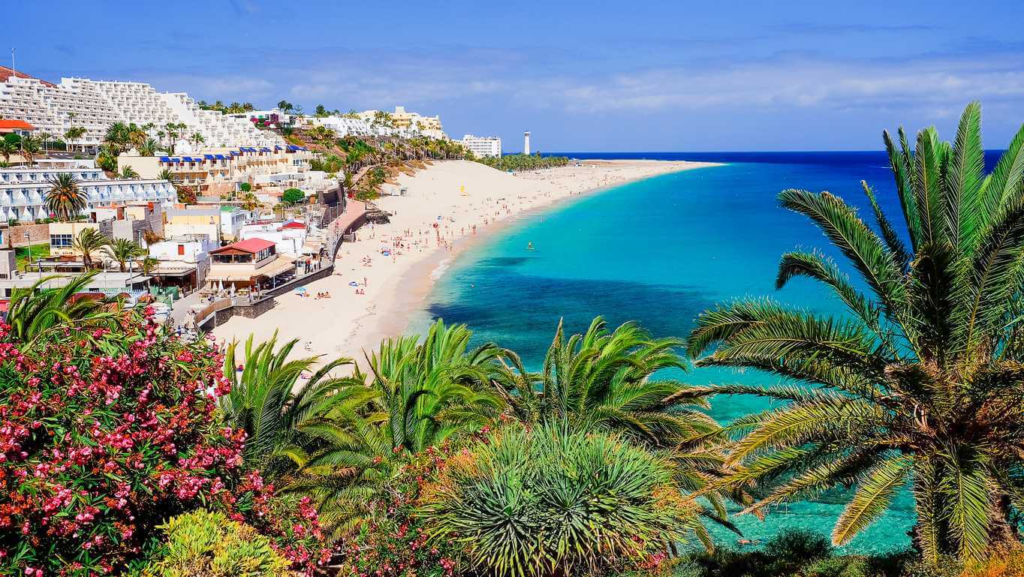Spain, with its rich cultural heritage, diverse landscapes, and vibrant cities, is one of the most popular travel destinations in the world. From the sun-soaked beaches of the Costa del Sol to the historic streets of Madrid and Barcelona, Spain offers something for every type of traveler. However, choosing the best time to visit can be challenging, as each season brings its own unique charm and experiences. In this article, we will explore the best seasons to visit Spain, taking into account weather conditions, crowd levels, prices, and popular events to help you plan your perfect trip.
1. Spain’s Climate and Regions

Spain’s climate varies significantly depending on the region. It is divided into three main climatic zones:
- Mediterranean Climate: Predominant along the coastlines, including Barcelona, Valencia, and the Balearic Islands, with hot, dry summers and mild, wet winters.
- Continental Climate: Found in the interior, including cities like Madrid and Toledo, characterized by hot summers, cold winters, and low rainfall.
- Oceanic Climate: Present in the northern regions like Galicia, Asturias, and the Basque Country, with mild summers, cool winters, and high rainfall.
Understanding these climatic zones is essential for planning your visit, as the weather can greatly impact your travel experience.
2. Spring (March to May): Season of Festivals

Spring is one of the best seasons to visit Spain, offering pleasant weather, blooming landscapes, and a plethora of cultural events. Temperatures are moderate, ranging from 15°C to 25°C (59°F to 77°F), making it ideal for sightseeing and outdoor activities.
- Pros:
- Mild Weather: Ideal for exploring cities and countryside without the intense heat of summer.
- Lower Crowds: Fewer tourists compared to the peak summer months.
- Festivals: Spring is packed with traditional festivals such as Semana Santa (Holy Week), celebrated throughout the country with grand processions and events.
- Cons:
- Unpredictable Weather: While generally mild, some regions can experience rain, especially in the north.
- Prices: Spring is considered a shoulder season, so prices for accommodation and flights are generally lower than in summer. For example, a mid-range hotel in Madrid might cost around €100-€150 per night, while flights from major European cities can be found for as low as €50-€100.
- Top Destinations to Visit in Spring:
- Seville: Experience the grandeur of Semana Santa and the vibrant Feria de Abril (April Fair).
- Valencia: Don’t miss Las Fallas, a unique festival where giant sculptures are set ablaze.
- Granada: Enjoy the Alhambra and Generalife Gardens in full bloom.
3. Summer (June to August): Sun, Sea, and Siestas

Summer in Spain is synonymous with beach vacations, lively nightlife, and an array of cultural festivities. The temperatures soar, especially in southern regions, ranging from 25°C to 35°C (77°F to 95°F), and even higher in some inland areas.
- Pros:
- Beach Season: Perfect for enjoying the Mediterranean and Atlantic coasts, with crystal-clear waters and lively beach towns.
- Festivals: From La Tomatina in Buñol to San Fermín (Running of the Bulls) in Pamplona, summer is filled with iconic events.
- Long Days: With up to 11 hours of sunshine, there’s plenty of time for sightseeing and activities.
- Cons:
- High Temperatures: Inland cities like Madrid and Seville can become unbearably hot, often exceeding 40°C (104°F).
- Crowds: Coastal areas and major cities are packed with tourists, leading to higher prices and longer wait times at attractions.
- Prices: Summer is the peak tourist season, so prices for accommodation and flights are at their highest. A standard hotel room in Barcelona might cost around €200-€300 per night, and flights from major cities could range from €100-€200. Booking well in advance is recommended to secure the best rates.
- Top Destinations to Visit in Summer:
- Ibiza: Known for its world-famous nightlife and stunning beaches.
- Costa del Sol: Ideal for beach lovers, with resorts like Marbella offering luxury and relaxation.
- San Sebastián: Enjoy the city’s beautiful beaches and indulge in its renowned Basque cuisine.
4. Autumn (September to November): A Golden Retreat

Autumn is another fantastic time to visit Spain, especially for those looking to avoid the intense summer heat and crowds. The weather is still warm, ranging from 20°C to 30°C (68°F to 86°F), and the landscapes are painted in beautiful autumnal hues.
- Pros:
- Comfortable Weather: Warm temperatures are ideal for exploring cities and countryside alike.
- Harvest Season: A great time to experience Spain’s wine regions, such as La Rioja, during the grape harvest.
- Cultural Events: Events like La Mercè in Barcelona and the San Sebastián International Film Festival add a cultural flavor to the season.
- Cons:
- Shorter Days: As autumn progresses, daylight hours decrease, limiting the time for outdoor activities.
- Prices: Autumn is a shoulder season, so prices are generally lower than in summer. Expect to pay around €80-€120 per night for a mid-range hotel in major cities, and flights can be found for around €50-€100 depending on the destination.
- Top Destinations to Visit in Autumn:
- Barcelona: Enjoy the city’s cultural festivals and fewer crowds compared to summer.
- La Rioja: Experience the grape harvest and visit some of Spain’s finest wineries.
- Madrid: The city comes alive with art exhibitions, theater, and a vibrant culinary scene.
5. Winter (December to February): Tranquility and Tradition

Winter in Spain offers a different experience, with cooler temperatures and a more relaxed pace. While the coastal regions and southern Spain remain relatively mild, northern and inland areas can be cold, with temperatures ranging from 5°C to 15°C (41°F to 59°F).
- Pros:
- Fewer Tourists: Major attractions and cities are less crowded, providing a more authentic experience.
- Festive Atmosphere: Christmas and New Year’s celebrations are vibrant, with unique traditions such as the Three Kings’ Day parades.
- Skiing: The Sierra Nevada and Pyrenees offer excellent skiing opportunities.
- Cons:
- Weather Variability: Northern Spain can be cold and rainy, while inland areas experience chilly temperatures.
- Prices: Winter is considered off-season (except during the Christmas holidays), so prices are the lowest of the year. A hotel room in Seville might cost around €60-€100 per night, and flights are generally cheaper, often under €50 for domestic routes.
- Top Destinations to Visit in Winter:
- Granada: Visit the Alhambra without the crowds and enjoy skiing in the nearby Sierra Nevada.
- Canary Islands: With temperatures around 20°C (68°F), they are perfect for a warm winter escape.
- Madrid: Experience the city’s festive lights and vibrant cultural scene.
6. Comparing Costs Across Seasons
Visiting Spain can vary significantly in cost depending on the season. Here’s a breakdown of typical expenses:
- Accommodation:
- High Season (Summer): €150-€300 per night for mid-range hotels in major cities.
- Shoulder Season (Spring & Autumn): €80-€150 per night.
- Low Season (Winter): €60-€100 per night.
- Flights:
- High Season: €100-€300 for international flights.
- Shoulder Season: €50-€150.
- Low Season: €30-€100.
- Activities and Dining:
- Costs remain relatively stable year-round, but peak season might see increased prices for tours and popular attractions. Dining out in Spain is generally affordable, with a typical meal at a mid-range restaurant costing around €15-€25.
7. Special Considerations for Each Season
- Spring: Ideal for cultural festivals and exploring cities. Book accommodations in advance during major events like Semana Santa.
- Summer: Perfect for beach holidays. Expect high prices and crowded attractions.
- Autumn: Great for wine tourism and outdoor activities. Consider visiting smaller towns and countryside.
- Winter: Best for budget travel and experiencing local traditions. Avoid northern regions if you dislike cold weather.
8. Tips for Planning Your Trip
- Advance Booking: For peak seasons, book flights and accommodations well in advance to secure the best prices.
- Local Festivals: Check for local festivals and holidays, as these can significantly impact availability and prices.
- Weather Preparedness: Pack appropriately for the season, especially if traveling to regions with variable climates.
Choosing Your Perfect Season to Visit Spain
The best season to visit Spain ultimately depends on your personal preferences and travel goals. Whether you’re seeking the vibrant energy of summer festivals, the tranquility of a winter getaway, or the blossoming beauty of spring, Spain has something to offer year-round. By considering the weather, crowd levels, and prices,
Keep reading: Why Spain Nomad Visa Is the Best in the World










